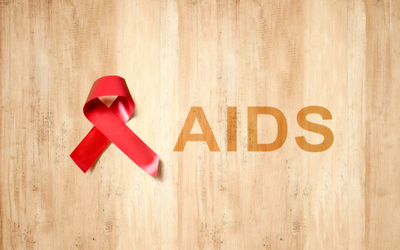People around the world have various misconceptions about AIDS.
[the_ad id=”13371″]
These misconceptions are not limited to illiterate masses, even the educated & literate people around the world believe in various myths about the existence of AIDS. This has resulted in people diagnosed with AIDS receiving unwarranted discrimination.
As of 2018, 37.9 million people globally were living with HIV. But, although the cure for AIDS is yet to be discovered, with the growing advancements in healthcare, getting medical care that can help in leading a prolonged & healthy life is now possible around the world.
So, let us address a few common misconceptions about it and know how it can and, most importantly cannot be transmitted, so that a lot of worries can be avoided.
- AIDS and HIV are the same
Although they could be related, they are different. When a patient is described as living with HIV, it means that they have HIV (Human Immunodeficiency Virus) in their body. While AIDS (Acquired Immunodeficiency Syndrome) is the advanced stage of HIV infection. Here the body’s immunity becomes vulnerable or fails.
- HIV can be transmitted through an insect bite
When an insect bites, especially a mosquito, it sucks your blood and does not inject the blood sucked from the last person into your body. So, there is almost no chance of HIV spreading through an insect bite.
- Sharing food, cutlery, and clothes spread AIDS
HIV is a virus and it cannot be transmitted by touching. So, if you come in contact with an infected person, there is no chance of getting infected. The same goes for water and air, as the virus cannot spread through them. So, swimming or breathing the air, in the presence of an infected person cannot spread the virus. Using the same washrooms, toilets, cutlery and even coughing, sneezing or spitting does not spread the virus.
- Kissing and physical contact is not safe
The only possible way of transmitting HIV through kissing is if both the parties have open sores or bleeding gums in their mouth through which the blood is exchanged. For that matter, HIV does not spread through sweat, urine or even feces.
- Oral sex, mutual masturbation is unsafe
The chances of spreading HIV through oral sex is as low as kissing but with exceptions. As the virus cannot survive outside the body, mutual masturbation is also safe. In case of using sexual devices, make sure to use protection all the time. Sharing these devices may act as a carrier for the disease.
- No sex with an infected person
Condoms are effective in preventing HIV and other STDs (Sexually Transmitted Diseases). If proper protection is taken, one can have sex with an HIV infected person too. If the person is undergoing treatment and has an undetectable viral load, then the chances of transmission are less or even negligible.
- It is a disease only among the LGBTQ community
Although it is true that the number of patients from the LGBTQ community is more, that doesn’t paint the entire picture and can be said as a mere misconception. Anyone can get infected with HIV if they have unprotected sex with multiple partners or share needles when injecting drugs.
- Both partners have HIV, so no need for protection
Protection is always necessary as AIDS is a deadly disease. Although therapy will lower the viral load of HIV, it is always present in the body and can be easily transmitted to others. The much-needed anti-retro viral drugs also cannot keep it from passing to others. So, always use protection. Resistant virus may get transmitted leading to treatment failure.
- Infected mother always transmits HIV to infant
With the recent advancements in healthcare, the transmission of HIV can be successfully stopped from the mother to the foetus. As per the studies, if the HIV + mother takes the virus suppressing drugs, the chances of transmitting the virus is less than 1 in 100 cases. So, it is not true to say that the infected mother will always transmit HIV to the infant.
- AIDS is a death sentence
Previously, AIDS was considered as a deadly disease because of a lack of proper diagnosis and treatment. With advancements in healthcare and the introduction of ARTS medication, the care, support and life expectancy have been better. Today, even the infected person has a normal life expectancy like the non-infected ones.
Source:

